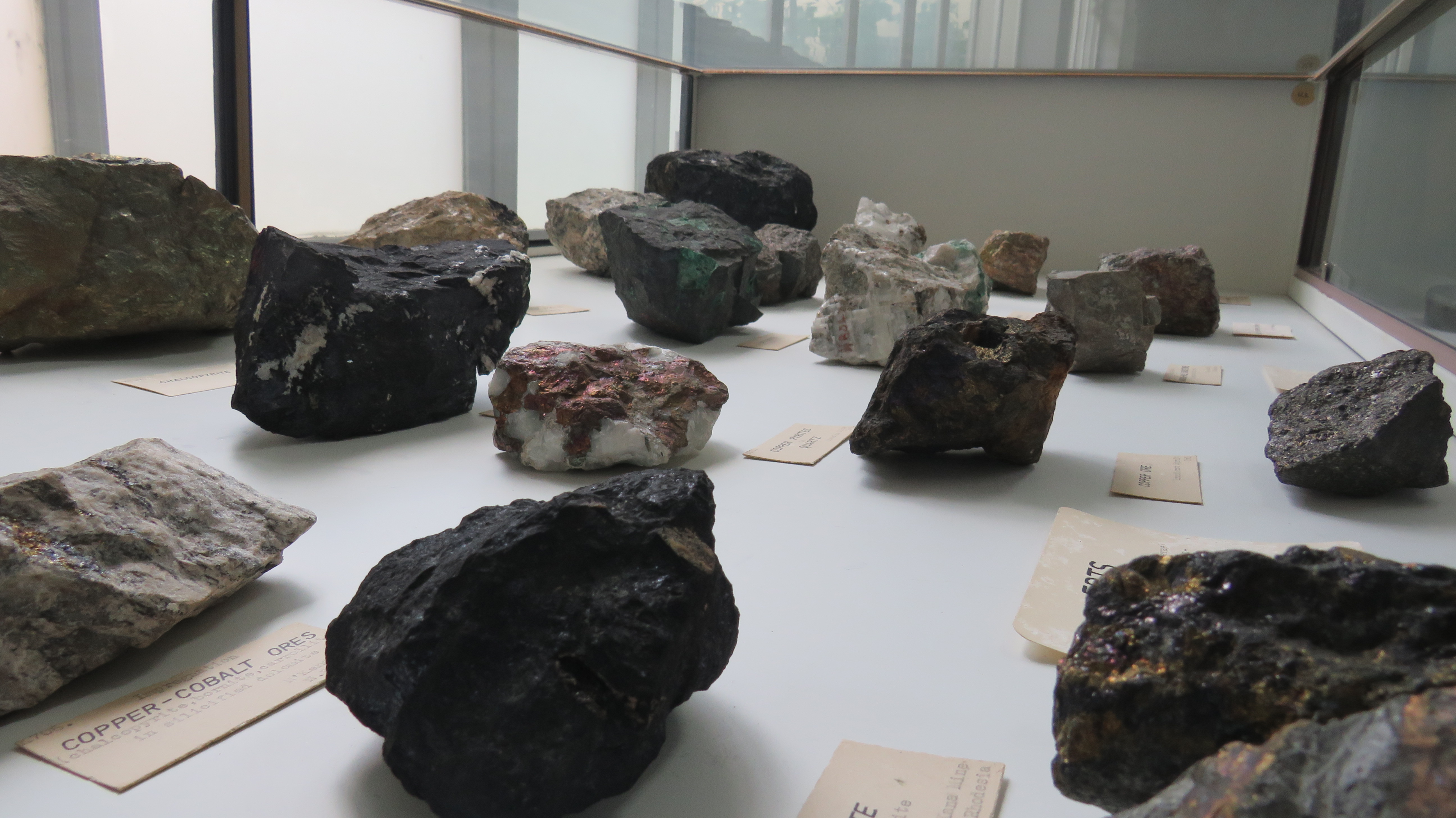Geol 344 Economic Geology
Dr. Bjorn von der Heyden
Course Synopsis
Element movement. Exploration geology and geochemistry. Geophysics. Classification and genesis of mineral deposits. Economic geology of Africa with emphasis on Southern Africa. Introductory geostatistics. Mineral resource calculations and geometry. Mineral Economics. Environmental impact studies.
Goals and desired outcomes
The overall aim of this course is to provide third-year students with a comprehensive introduction into the scientific (and to a limited extent; economic) study of ore mineralisation. By the end of this course, students are expected to have:
Ore mineral specimens (credit M Mayne)
- An understanding of the socio-economic drivers for mining and exploration activities.
- Detailed knowledge, and the ability to interpret the strength, of the various genetic models associated with each class of mineralisation; with emphasis on the mineralogy, geology and geochemical controls on mineralisation of Southern African ore deposits, as well as notable world class ore deposits.
- An understanding of the roles of a geologist in the mining and exploration industries.
Course content
Theory:
- Resource/reserve classification
- Socio-economic drivers of demand for ore commodities (and implications for supply and price)
- Geochemistry of hydrothermal fluids and geochemical controls on ore mineral deposition
- Mineralogy and occurrence of alternation mineral assemblages
- Geology, mineralogy, geochemistry, paragenesis, tectonic setting, characteristic ages and proposed genetic models of local and world class ore deposits, e.g.:
- Orthomagmatic deposits (Cr, PGE, Cu/Ni, Fe/Ti/V);
- Granite-associated mineralisation (skarns, greisen-bordered veins, pegmatites etc.);
- Kimberlites;
- Porphyry deposits;
- Volcanogenic Massive Sulphide and Sedimentary Exhalative deposits (Cu, Zn, Pb);
- Mississippi Valley-type (Zn, Pb) deposits;
- Sediment-hosted stratiform deposits (Cu ± Pb, Zn, Ag, Co);
- Iron Oxide-Copper-Gold extended class of deposits;
- Orogenic and epithermal gold deposits;
- Placer deposits;
- Chemical sediments (Fe, Mn);
- Bauxites.
- Exploration strategies and techniques
- Introduction to mining geology
Drillcore from a mine as exercise material (credit M Mayne)
Practical:
Practical sessions will endeavour to follow the class content closely, and students will be expected to familiarise themselves with microscopic and macroscopic properties of ore mineral assemblages. Among other exercises, practical sessions will involve:
- Descriptive evaluation of ore minerals in hand sample
- Introduction to reflected light microscopy of ore minerals
- Grade-tonnage calculations
- Site visits to local mineralised geology
Relevant literature
The prescribed set work book for the course is "Introduction to ore-forming processes" by Laurence Robb. The course will not strictly follow the format of the text book, however, students will be expected to conduct the relevant reading before the respective classes to enhance class interaction and to stimulate discussion. Additional noteworthy journal articles will be referred to, and will also be regarded as a part of the syllabus.

